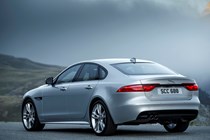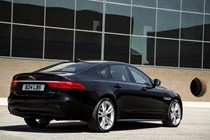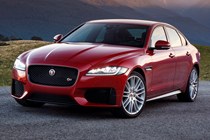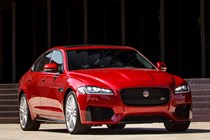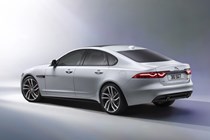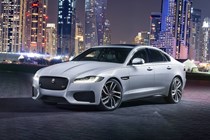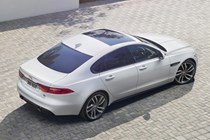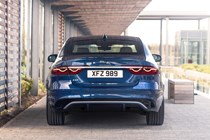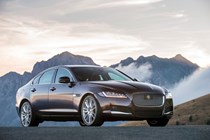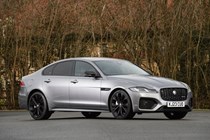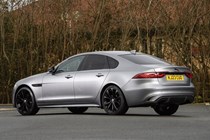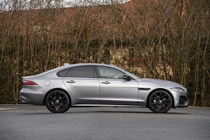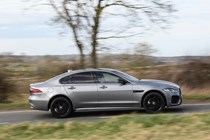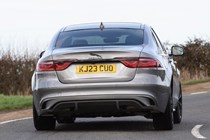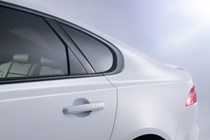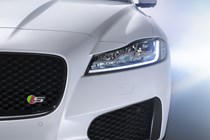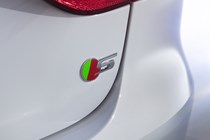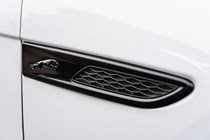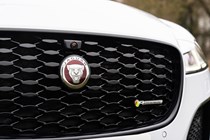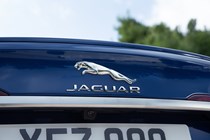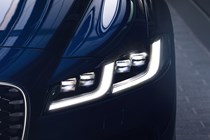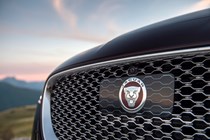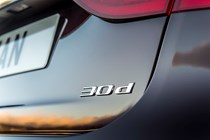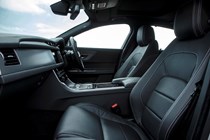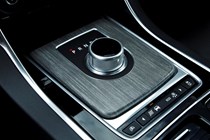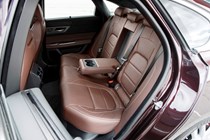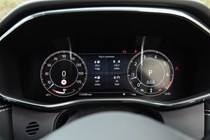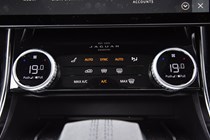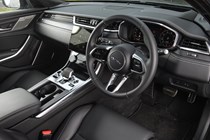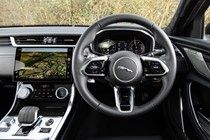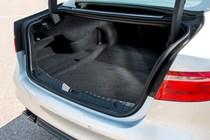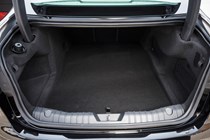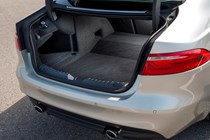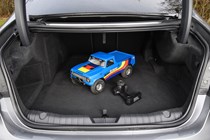Jaguar XF Saloon (2015-2024) engines, drive and performance
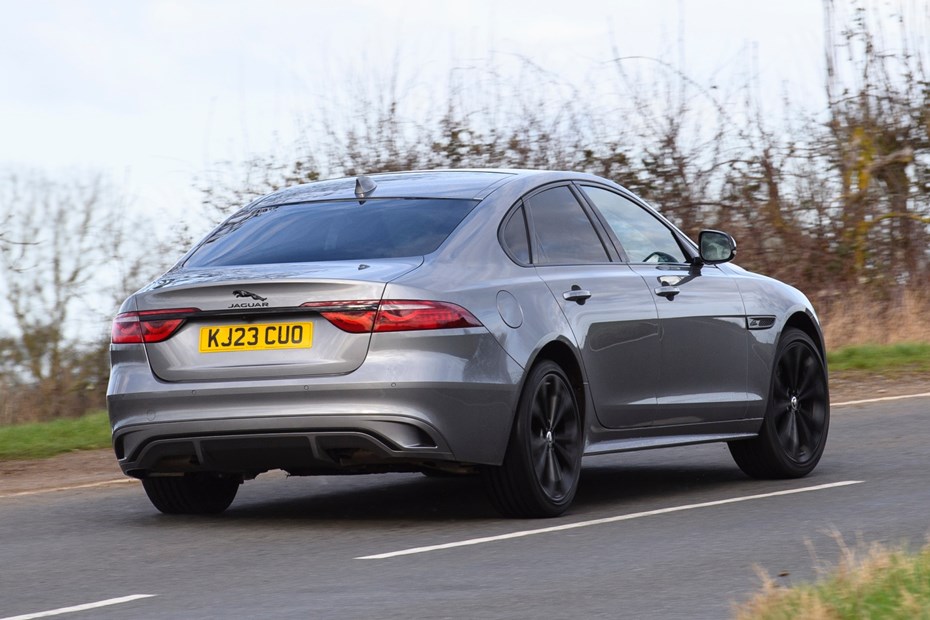
- Efficient four-cylinder petrols and diesels
- Simplified engine range from 2021
- Best for performance is the 300hp petrol
The engine range was simplified down to three choices as part of the 2021 facelift, with one mild hybrid diesel and two petrol engines. All are 2.0-litre, turbocharged four-cylinder units and come with an eight-speed automatic gearbox.
All-wheel drive brings the benefit of additional traction and stability in poor conditions and is available as an option on the diesel, but comes fitted as standard on the most powerful petrol. These systems do add weight, though, meaning they are slightly slower and less efficient.
Petrol engines
The base P250 petrol engine produces 250hp and 365Nm of torque, which is offered in conjunction with rear-wheel drive. The 0-62mph dash takes 6.9 seconds and it can reach 155mph. On the road it feels brisk enough, if not particularly refined.

At the top of the petrol range is the 300hp P300, which also produces a stout 400Nm of torque. Only offered with all-wheel drive, this reaches 62mph in 6.1 seconds, and will carry on to a limited 155mph. While the added traction will be welcome to some, we’d stick to the more efficient P250.
Diesel engines
Powering the bulk of Jaguar XF saloons will be the 204hp mild-hybrid diesel, designed to deliver high efficiency without sacrificing performance. It takes 7.6 seconds to get from 0-62mph, with a top speed of 146mph. The all-wheel drive version takes 7.8 seconds and has a slightly lower 143mph top speed.
View the specs for all engines
While this engine isn’t particularly characterful, it is at least flexible and eager to rev. With 430Nm of torque, there’s plenty of muscle and it doesn’t even feel off the pace compared with the more powerful D240 option that was previously available.

That said, the automatic transmission plays a big part when it comes to accessing the engine’s performance. Whether you want to execute a quick overtaking manoeuvre or ease up to motorway speeds, its decision-making is a strong point – knowing whether to change down a gear or to simply make use of the engine’s torque. This is a genuinely good all-rounder and if you want maximum flexibility and effortlessness, it’s the way to go.
Engines no longer available
There used to be a wider range of diesel engines, starting with the 2.0-litre producing 163hp and 380Nm of torque, coming with the choice of a standard six-speed manual or optional automatic gearbox. The manual version gets from 0-62mph in 9.8 seconds, while the automatic version does the same in 9.1 seconds. On the efficiency front, there’s very little difference – although emissions for the automatic version are slightly higher at 135g/km of CO2 compared to 124g/km of CO2.
Choose the 180hp version of the engine and top speed climbs to 136mph, while the 0-62mph time for the manual version drops to 9.2sec. The automatic is quicker still and takes 8.4sec to hit 62mph from a standstill.
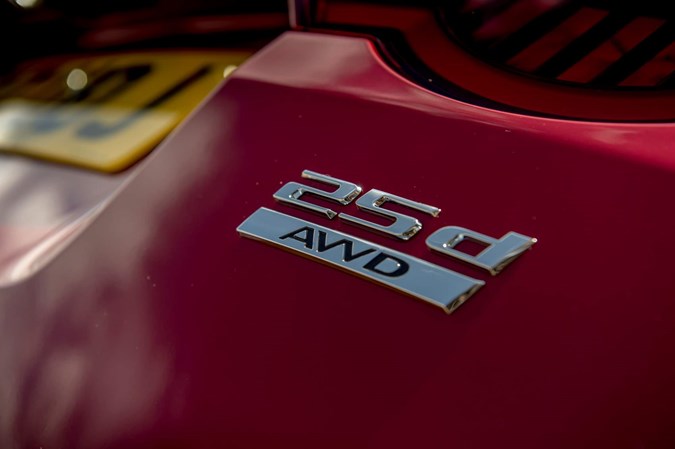
The 2.0-litre diesel engine fitted with two turbos produces 240hp and 500Nm of torque. All-wheel drive and an automatic gearbox is standard, and the 0-62mph sprint is dispatched in a suitably swift 6.9 seconds. Flat out, this version will do 153mph.
You could argue that those stats render the heavier and more complicated 3.0-litre diesel redundant. It puts out 300hp and a whopping 700Nm, which allows this V6 XF to get from 0-62mph in 6.4 seconds.
It’s only fractionally faster, too, reaching 155mph instead of 153mph. You could only have this engine in conjunction with rear-wheel drive, making it more of a handful in wet or wintery conditions. It’s also only offered in higher-spec Portfolio or S variants, bumping up the cost further.
The XF S: ultimate performance, but now only available used
The ultimate XF in terms of performance was the petrol 3.0-litre V6, which was discontinued in 2018. This supercharged 380hp unit delivered 450Nm of torque to the rear wheels.
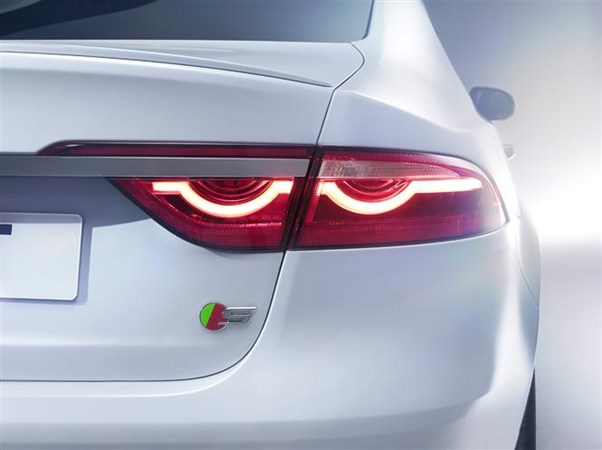
While it’s fast and very entertaining to drive, we think the punchier diesel version, with its low-down torque, suits day-to-day driving in the XF a little better. However, when you opt to drive the petrol XF gently, the engine note is more hushed and docile at urban speeds.
Once again the top speed was electronically-limited to 155mph, but the 0-62mph time was just 5.3 seconds. You’d pay at the pumps though, with a claimed 34.0mpg and CO2 emissions of 198g/km.
How does it handle?
- Lightweight aluminium body makes for agile handling
- Buyers can choose different suspension set-ups
- Revised steering delivers rewarding drive
Employing lightweight aluminium for the body helps keep the weight much lower than newer rivals, especially those with plug-in hybrid powertrains. That gives it an edge when it comes to both ride and handling.
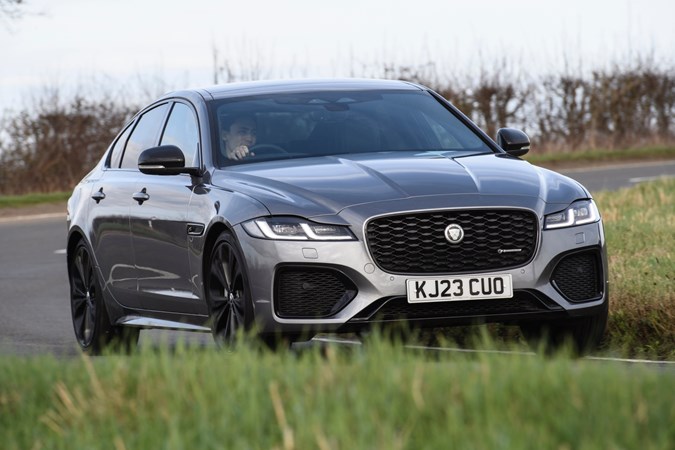
While a range of suspension options were previously available, all XFs now come in R-Dynamic flavour. With the 20-inch wheels of top spec HSE, there’s a firm edge to the ride over poorly surfaced roads that’s likely to be better in 19-inch shod SE or 18-inch S models.
It deals with larger bumps, crests and compressions well, absorbing the impact whilst keeping excess body movements well in check. It feels far more composed than the E-Class and therefore better suited to UK roads.
Keen drivers will enjoy the precise handling, with well-judged steering that feels naturally weighted and sufficiently quick for something a bit sporty. You’re aware it’s not a small, light car, but amongst these big executive saloons, the XF feels agile and willing, with pleasing balance.



